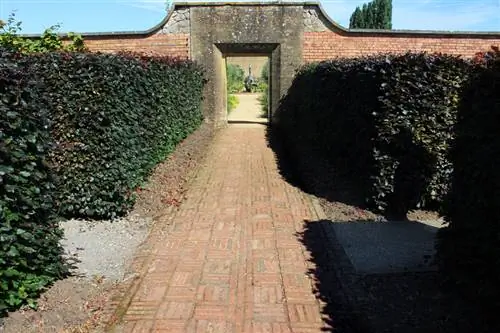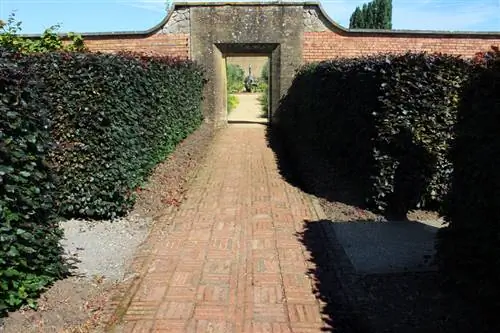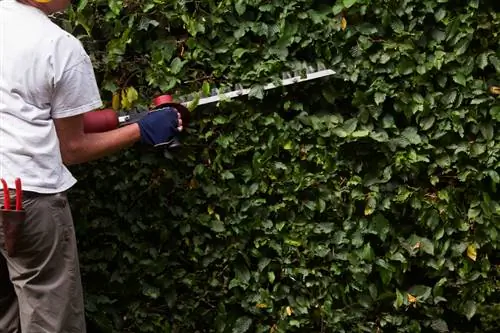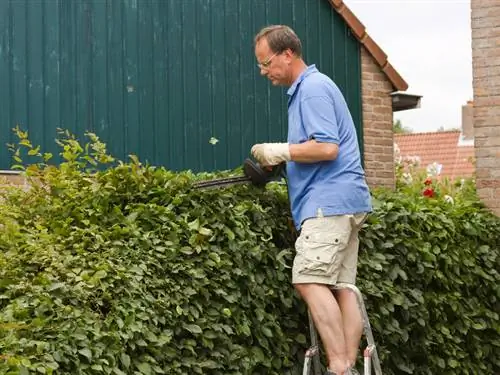- Author admin [email protected].
- Public 2023-12-16 16:46.
- Last modified 2025-01-23 11:20.
A red beech hedge needs to be cut twice a year if you want it to stay nice and dense. European beeches tolerate pruning well, although they need to be cut a little more carefully than, for example, hornbeam hedges. When to cut a beech hedge and what you need to pay attention to.

When and how should you cut a beech hedge?
A beech hedge should be cut twice a year: once in February before the first shoots and again after St. John's Day in June. When cutting, make sure that the hedge is cut wider at the bottom than at the top to ensure sufficient light for the lower regions.
Why do you have to cut beech hedges?
You need to cut beech hedges for several reasons:
- Limiting growth
- Topiary
- Rejuvenation
- remove diseased shoots
Common beech trees sprout vigorously twice a year. They grow between 40 and 50 centimeters in height and width per year. If you don't trim it, the hedge will start to overgrow and become out of shape. The lower regions no longer receive enough light and become bald. The beech hedge is then no longer properly dense.
By cutting you ensure that the lower regions get light and that the shoots branch well.
When is the right time to cut a beech hedge?
The first cut, which can be radical, should preferably be done on a frost-free, dry day in February. European beeches sprout for the first time in March, so this early pruning doesn't hurt them that much.
The second shoot of the common beech begins in June and is completed around St. John's Day, June 24th. Afterwards, another pruning should be carried out, but this time only moderately.
Every few years the beech hedge can use a rejuvenation cut. Very old branches are removed and the interior of the hedge is thinned out to make room for new shoots.
Cut back beech hedges heavily
You can cut beeches back to the old wood. If new shoots are to form, leave as small residues as possible with at least three eyes. New branches can develop from this.
Sick shoots should be removed as soon as possible so that any pests or diseases cannot spread further.
Do not cut back radically from March to July
Common beeches are popular nesting places for blackbirds and other birds. Therefore, do not cut back the beech hedge so much during the breeding season from March to July.
Before cutting, check whether there are still breeding birds in the hedge and then postpone pruning for a few days.
Cut beech hedges slightly conical
When you cut the beech hedge, you should mark the height and width with guide lines. Without a template, the hedge becomes crooked and crooked and looks unkempt.
So that the lower regions get light, trim a beech hedge so that it is wider at the bottom than at the top.
A conically cut red beech hedge does not suffer as much from broken snow in winter. The snow can slide off more easily and does not bend the branches.
Tip
Don't let the beech hedge get too high. The best height is at which you can maintain the hedge without needing a ladder or even scaffolding.






